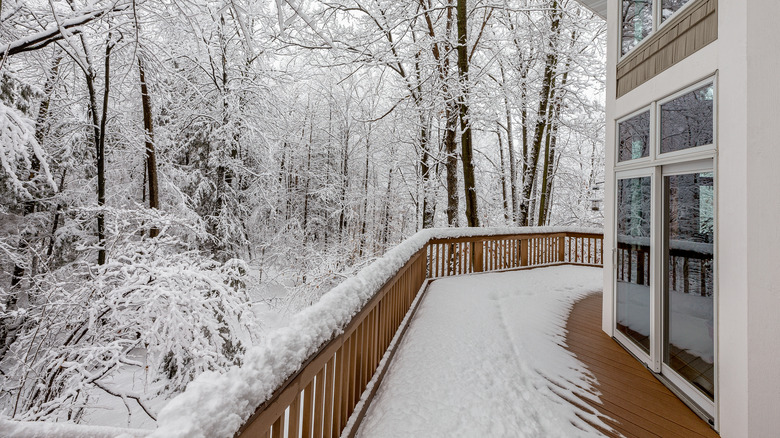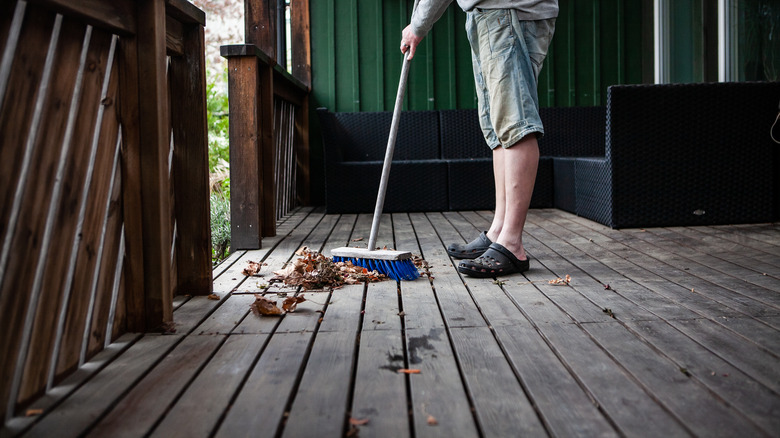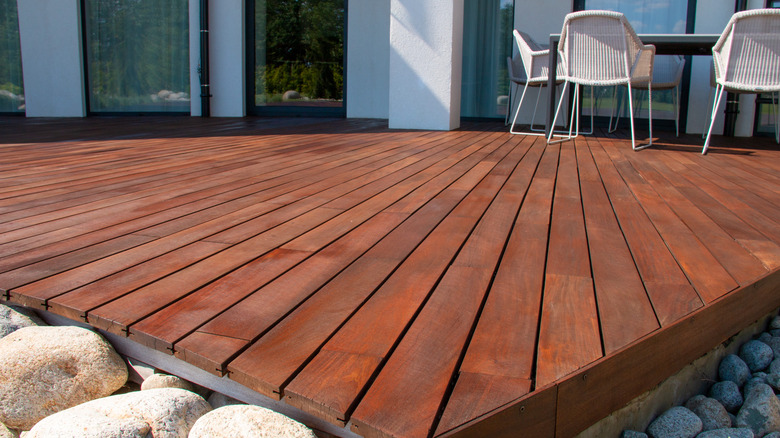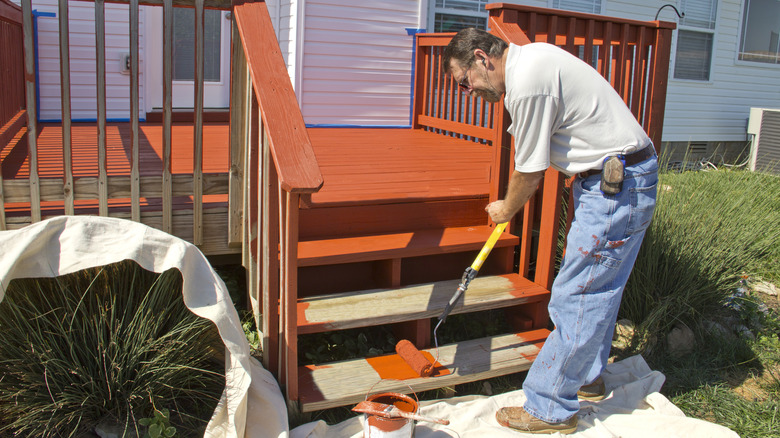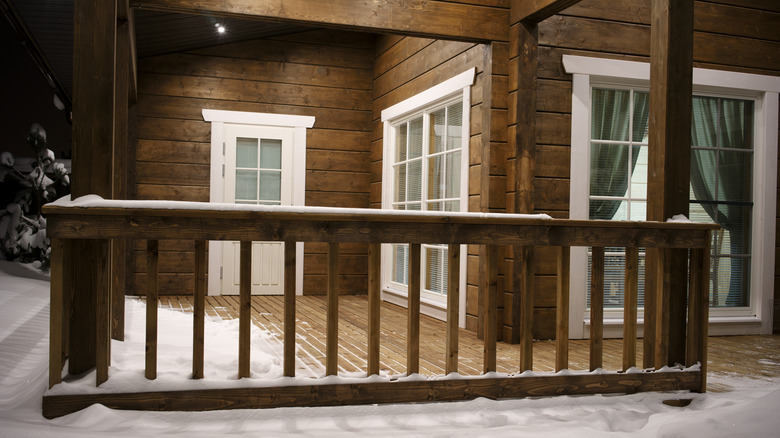5 Simple Ways To Protect Your Deck This Winter
The deck is special to people for different reasons; for some, it is a place to kick back and unwind, while for others, it is a place for holding gatherings and small parties. With that said, you need to take care of your deck to enjoy more services for years to come. Although it might not feel like it right now, one thing for sure is that winter is just around the corner. Shortly, temperatures will plummet, and the cold winter weather will take its toll on your precious deck. For most homeowners, prepping the deck for winter falls far down the priority list. Most people assume that since the deck is made of tough materials, it should be able to brave the worst of winter.
Unfortunately, it doesn't work like that; winter presents unique conditions that will push your deck to the limit. According to Seal-A-Deck, wood damage, freezing, and thawing are common problems, especially in wooden decks. Therefore, any little help you provide will go a long way in helping it push through winter. So is your deck ready for winter this season? What are you doing to protect your investment from the worst of the cold weather? Here are a few helpful tips that you can implement to protect your deck from the worst of winter.
1. Clear the deck
For most people, the deck is a cozy space with plenty of furniture and other items that make the area comfortable and inviting. However, when winter comes, the deck area is no longer a place to hang out; instead, this is the perfect weather for cozying up indoors with a fire. So you need to begin by removing everything from the deck and storing your essentials safely until it is time to enjoy the outdoors again. Clearing everything from the deck will make it easier to enjoy the other activities that will follow.
While taking the items indoors, remember to remove your planters from the deck. Planters are notorious for staining wooden decks, particularly during winter. According to UglyDeck, wooden decks need to dry, but planters trap moisture. The deck also fails to dry because of the cold winter temperature, causing staining or, worst, wood rot. It is also worth mentioning that you should ensure that the furniture and other items from the deck are dry before storage.
2. Clean and remove debris
How much you need to clean your deck in preparation for winter is entirely dependent on the current condition of the deck and the environment you live in. If you have been actively using the deck for parties recently, you don't want to leave that barbeque sauce on the wooden deck, and removing it after winter will be almost impossible. Also, if your house is built between trees, there must be a pile of dry leaves on the deck, especially if you haven't used it in a while. So before the snow starts falling, it is ideal for removing the debris that might rot and cause damage to your precious deck.
Cleaning your decks should be a no-brainer, especially if there are no visible stains. Begin by removing the large debris before mopping with clean water. While doing so, ensure no debris is stuck between the wooden planks. However, if there are some visible stains, I Wood Care recommends using an oxygen bleach that is safe for the deck and will not harm the plants nearby. While composite, wooden, and plastic decks are generally durable, they are far from invincible; winterizing is essential and recommended.
3. Eliminate any mold or mildew present
Mold and mildew will grow almost anywhere there is moisture, including your deck. Typically, molds are more prevalent after winter when there has been consistent moisture and not enough sun for your deck to dry off. Molds will also grow on your deck if there has been a lot of rainfall, and ignoring them before winter will make the situation far worse. One way to prepare your deck for winter is by eliminating any present mold and mildew.
According to New Jersey Siding & Windows, leaving mold to overrun your deck depreciates the appearance and weakens the structure over time, potentially putting everyone in harm's way. Usually, removing mold from the deck is relatively straightforward — light detergent and pressure washing should do it. You can also make a cleaning solution using vinegar or baking soda and scrub away. To prevent mold from growing in the future, give your deck enough room to dry.
4. Apply a protective sealant
Ultimately, the best protection you can give your deck is giving it a good coat of water-repellent sealant. Remember, water is the biggest enemy of wooden decks, and in the cold winter months, water will be sipping into the wood if not coated well enough. However, for this particular process, you must ensure the deck is clean and completely dry before going in with the sealant. Also, you will need to have removed every obstacle that may get in the way during the process, and failure to do so will mean that you will leave some spots compromising the effectiveness of the coat.
According to the Trex Company, a good deck sealant should be able to penetrate deep into the wood grain while at the same time coating the surface to preserve the wood's original aesthetic appearance. Keeping moisture away, especially during winter, is necessary to prevent mold growth and keep the deck from rotting. Fortunately, sealing the deck is often a simple DIY project that you can do without calling professionals. House Tipster says DIY is relatively economical, saving you a huge chunk of the $910 average cost of hiring an expert.
5. Consider covering your deck with a tarp
When protecting your deck during winter, you need every possible help you can get. Remember, a sealant only goes so far, especially when exposed to moisture for days on end. One way of preventing snow and water from directly getting into contact with the deck is by using a tarp. This added barrier will help reduce the freezing and thawing effect continuously during winter. Be sure to cover as much surface on the deck as you can. One thing you should keep in mind while covering your deck with a tarp is wind. You must secure the tarp well with hooks or nails at the corners to prevent wind from blowing the cover away.
However, it is worth mentioning that it might not be a viable option for every home, and this is especially true for those that need to use the deck or have other outdoor features like a fireplace or hot tub installed on the deck. Finally, while tarping a deck is a good idea, AdvantageLumber mentions that a tarp can also destroy wooden decks, prevent airflow, and might also trap moisture. Therefore, you will need to remove the tarp immediately after the threat of winter snow diminishes.
